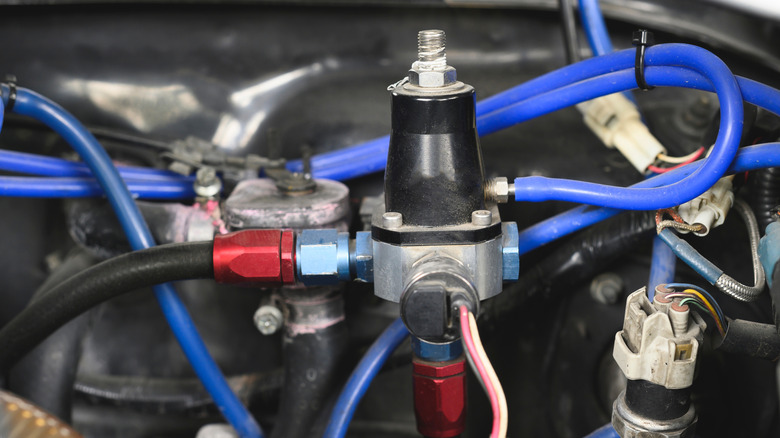In case your small-block Chevy is laying down some critical horsepower — particularly if these beans are courtesy of a excessive compression ratio or increase — you have in all probability thought-about switching to E85 gas. On the danger of being labeled Captain Apparent, E85 is comprised of 85% ethanol and 15% gasoline. Sometimes, E85 has an octane ranking someplace between 100 and 105, which blows away ~93 octane premium gasoline. Truly, E85 is sort of as potent as specialty race fuel, however corn-based ethanol is manner inexpensive. It is changing into simpler to entry, too. In accordance with the U.S. Division of Vitality, “greater than 4,200 public E85 stations in 44 states provide high-level ethanol blends.”
Nonetheless, one of many arguably many downsides to E85 is that its warmth worth, measured in BTUs per gallon, is roughly 27% decrease than gasoline. In plain-speak, that signifies that engines working E85 will burn roughly 27% extra gas. Nonetheless, E85 is less expensive than race fuel and octane boosting components that it kinda offsets the awful gas financial system. That mentioned, the appreciable further quantity of gas transferring by means of the gas system — mixed with E85’s repute as a moisture magnet and destroyer of rubber gas parts — signifies that particular modifications are required earlier than you can begin filling up your tank with corn.
Begin with the carb or EFI
Some mass-market autos are outfitted from the manufacturing facility to run E85. Nonetheless, the height reputation for such “flex gas” vehicles and vans was reached about 15 years in the past. Though E85 was clearly a flop with most of the people, what about changing older engine designs for efficiency sake? For instance, Chevy’s ubiquitous 350 cubic-inch V8 and its derivatives just like the 383 stroker?
In case your engine continues to be sporting an old-school carburetor, it’s going to have to be modified for the 25% to 30% larger gas quantity that outcomes with E85. Kits can be found with all the things essential to convert an current Holley carb to run E85, but when the thought of tiny screws, squirters, and air bleeds scattered all around the storage flooring is daunting, you can too purchase a brand new off-the-shelf E85 carb from a number of distributors within the aftermarket.
In case your choice is gas injection, Holley’s Sniper EFI is reportedly E85 suitable with some caveats like periodically flushing the system with gasoline to take away deposits. Different forms of EFI, together with manufacturing facility setups, have additionally been transformed to E85 by swapping digital modules and/or becoming bigger gas injectors. When you’re fortunate, a whole conversion equipment is out there. Such is the case for sure small-block Chevy V8s just like the L98 with tuned port gas injection that powered Corvettes and sure F-bodies all through the Nineteen Eighties and early Nineteen Nineties. One seemingly well-liked useful resource for such kits is eFlexFuels.
Ethanol degrades rubber components
As soon as the carburetor or gas injection system has been changed or modified, it is time to deal with the remainder of the gas supply system. Beside the plain want for a bigger gas pump, your entire the rest of the gas system resembling gas filters, gas strains, and stress regulators ought to be rigorously evaluated for each elevated gas circulate and the power to face as much as the alcohol in E85 gas.
Ethanol fuels are lethal to sure forms of rubber. In reality, even controversial E15 with simply 15% ethanol content material can wreak havoc in autos older than roughly 2001. In order you may think, the potential for rubber degrading jumps exponentially at 85% ethanol. Sections of rubber gas line, rubber diaphragms, and gasket seals could all have to be changed with a unique kind of rubber that is suitable with ethanol fuels, like Viton.
Lastly, because the alcohol in E85 readily absorbs moisture, water can accumulate and separate contained in the gas tank and gas system, referred to as section separation. To forestall section separation during times of lay-up, take into account a gas therapy additive to thwart the method. In abstract, in case your engine — small-block Chevy or in any other case — is crying out for larger octane gas, E85 is definitely an choice to expensive race fuel, however you should definitely issue within the upfront price and labor required.

